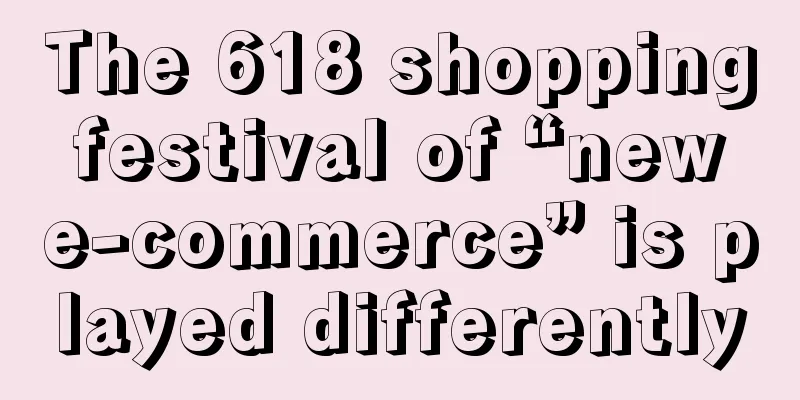The three major effects driving ChatGPT: scale effect, network effect, and scope effect

In Internet business reports, the three economic concepts of "scale effect", "network effect" and "scope effect" are frequent visitors. Over the past 30 years, it is the economic principles behind these three concepts that have driven the business miracles of the Internet and technology giants. Not long ago, large AI models represented by ChatGPT emerged and were considered to be the cornerstone of the next generation of the Internet. It is not difficult to find that "scale effect", "network effect" and "scope effect" are still the underlying logic followed in its development. Therefore, by deducing and analyzing along this context, we can dig out a lot of inspiration. 01 Scale effect: in the name of “emergence”The "scale effect" is also known as "economy of scale", which refers to the improvement of economic benefits brought about by the increase in scale. Generally speaking, this concept refers to the rule that in some industries, the increase in output reduces the average cost of products. For large AI models, the gift brought by scale is not only a quantitative change such as cost reduction. After massive data training, when the number of parameters of the large model reached an astonishing level of hundreds of billions, an "emergence" phenomenon occurred, that is, the similarity between the model output results and human thinking and expression had a qualitative breakthrough. This means, first of all, that large models have become almost the exclusive domain of large companies. From a hardware perspective, only large companies (or "children of large companies" like OpenAI) can afford to spend money to support tens of thousands of graphics cards for marathon training for several months; from a talent perspective, only large companies can afford a large team of computer PhDs with astonishing labor costs; from a data perspective, no one can compare with domestic and foreign technology giants in terms of data accumulation. "Big and scalable" will be good news for "shovel sellers". Even the giants cannot guarantee that they will have the last laugh in this round of AI melee. Admittedly, you may not be able to achieve the desired result even after training, and even after training you may not know how to realize the results. But do you dare not start training? At this moment, the CEOs of giants are as anxious as the mothers in Haidian District, and they are not short of money, so Nvidia and Aofei Data have naturally become the Xueersi and New Oriental before the "double reduction". The first wave of people who made a lot of money must be "shovel sellers". When the oligarchic structure stabilizes, government intervention is likely to follow. Whether in China, the United States or Europe, governments are increasingly nervous about the improper use of their monopoly position by Internet giants. The scale effect of large AI models is destined to make it difficult for "grass to grow under a big tree", not to mention that its powerful capabilities will inevitably have a severe impact on the entire society. Against this background, the governments' "having to intervene" and "not being able to intervene" will probably continue for a long time. 02 Network effect: Subsidy war may happen again"Network effect" is also called "network externality". It is a term in economics and business that is used to describe that for a product (or service), every additional user will generate new value for other users of the product. For example, there is no value in installing telephones when no one uses them, but the more popular telephones become, the higher the value of installing them. The AI big model is also subject to the principle of network effect. Take ChatGPT for example. The more people talk to it, the more training materials and iterations it has, and the more it "understands people" and becomes more "human-like". This will also require a "traffic entrance" in the AI era. The reason is that whoever attracts more real people to "practice together" first will be able to make their models reach a higher level of maturity first. This is already very obvious in ChatGPT's first-mover advantage. After text conversations, what will be the next "traffic outlet"? Games, videos, or other forms of interaction that have not yet appeared in front of the public? It's worth looking forward to. Moreover, there is a high probability that there will be another "subsidy war". The last round of subsidy war was also triggered by the network effect of the platform economy. ChatGPT's initial free strategy was actually a kind of "circling people". Based on this reasoning, domestic and foreign giants are likely to usher in another bloody subsidy war, and MaaS may not be able to escape the "spending money to buy volume" barrier. 03 Area Effect: The Love-Hate Relationship between the Powerful Dragon and the Local SnakeThe "scope effect" refers to the situation where when a manufacturer produces multiple related products at the same time, its unit cost expenditure is less than the cost of producing these products separately. The new generation of large models represented by ChatGPT are considered to be very close to general artificial intelligence (AGI). Therefore, many people believe that the traditional route of "one model for one scenario" has become history, and that AGI can do everything, but things may not be that simple. "Universality" alone cannot achieve "usability". Not to mention that the cost of training an "all-knowing and all-powerful" model will be astronomical, it is also difficult for giants to obtain know-how and actual business data in fields such as medicine and finance. This means that a "general" model may be able to learn a lot of "truths" from Wikipedia, textbooks, or even academic papers in related fields, but it will be at a loss when conducting actual business in related fields because it cannot accurately fit key parameters. The data of subdivided industries will highlight the "factor" attribute. When data mining capabilities are improved due to the upgrade of AI, the value of the data itself will naturally double, and the production factor attribute of the data will become more prominent. In this context, data holders will certainly not sit idly by and watch the value increments being eaten up by the model party. In fact, there are many industries with higher market concentration than the "big model industry" (let's use this term for the time being), so the bargaining power of high-value data holders will be greater than that of model holders, and high-value data holders often control the channels for application implementation. In this context, powerful companies and local tyrants need to explore a coexistence ecosystem. Only by exploring a series of business models that adapt to the actual environment and can be replicated on a large scale in terms of model training division of labor, data revenue distribution, and application results sharing can a healthy coexistence ecosystem be formed between powerful companies (model holders) and local tyrants (high-value data holders). Author: Dongdong Benzun, WeChat public account: Dongdong Notes (ID: dongdong_note) |
<<: Recognizing user value and transactions
>>: Marketing News in April | After consumption downgrade, where should the Xiaohongshu brand go?
Recommend
Data Analyst, how to make a pricing model?
How to make a pricing model in data analysis? Are ...
In this Olympic marketing, who is more cunning, Yili or Mengniu?
On the marketing stage of the Paris Olympics, the ...
After posting 2 videos in a row, which swept the entire Internet, Liziqi is back!
The perfect fusion of cultural heritage and pastor...
What is the Amazon brand authorization process? What are the benefits of Amazon brand authorization?
Merchants need to abide by the rules when opening ...
How to open an Amazon store? What are the requirements?
If you want to have a larger market and more oppor...
With 5,000 yuan, what can I do to start a business and make money?
How can ordinary people start a business? Based on...
Behind the trillion-level medical market, how can companies conduct private domain operations correctly?
This article delves into the private domain traffi...
The truth is always hidden in the comments section
As long as it is a social platform, there is a com...
What are the prospects of learning cross-border e-commerce? Is it easy to do?
Everyone also realizes that it is not so easy to r...
Luckin Coffee wants to be Mixue Ice City, not Starbucks
From product positioning to consumer experience, i...
Tea drinks also won 9.9, the current situation of tea drink track: each has been leading the trend for several years
Through its unique marketing strategy and precise ...
9.9 liquor is a big hit, and the "poor man's supermarket" Aldi is trapped in the extreme low price
In the tide of consumption downgrade, Aldi has bec...
How can Lazada open other sites? How can I register and open a store on Lazada?
For sellers who want to expand their business scop...
Where can I view my earnings on Amazon? How do I calculate my earnings?
When we operate an Amazon store, we need to know t...
Video account launches hot-selling product list
The video account selection center has launched th...









